We've just re-subscribed to Netflix, which sounds crazy, considering I write a film newsletter. I signed up about ten years ago, and honestly, I couldn't find anything I wanted to watch — it was a sea of trendy, earnest and depressing crime dramas; and politicised so-called 'historical' dramas. With a ‘modern twist’. Plus the dreaded CGI. So, I contented myself with Amazon Prime and the excellent BFI plug-in, both of which cover a huge range of old films.
But now we're back on Netflix, I'm enjoying the entire run of Mad Men (2007) immensely, and Ripley (2024). The latter, enjoyable as it is though, is not without some reservation. We're up to episode five, I think. Andrew Scott, excellent as he is, is too old and too sinister. I mean, if you were Dickie Greenleaf would you invite this creepy older bloke to come and stay with you? Andrew Scott’s Ripley is far too serious. The dry humour of the books is missing. I'm also trying to get my head round Eliot Sumner as Freddie Miles. What's that all about? Freddie Miles is supposed to be a bovine, bluff, boorish, philistine American Ivy League thug. As brilliantly portrayed by the late Philip Seymour Hoffman in Anthony Minghella's The Talented Mr Ripley (1999). A bit like Bunny Corcoran in Donna Tartt's The Secret History (1992). Somebody I would like to push off a cliff. But I’ll be writing a proper review, once we’ve seen the whole caboodle.
I’m a huge fan of the Ripliad: Patricia Highsmith’s series of crime novels, starring her enigmatic anti-hero, Tom Ripley: The Talented Mr Ripley (1955), Ripley Under Ground (1970), Ripley's Game (1974), The Boy Who Followed Ripley (1980) and Ripley Under Water (1991). By Ripley’s Game (1974), Tom has grown up: adopting the suave, WASPy personality of the murdered Dickie Greenleaf, and living in a desirable villa — Belle Ombre — with his desirable blonde trophy wife, Heloise, in the desirable French countryside outside Paris, living off the desirable proceeds of art forgery and a private income fraudulently acquired.
Highsmith is brilliant on the detail. You want to join Tom at Belle Ombre, with his Soutine and Matisse — and the forged Derwatts — in his drawing room with the yellow satin sofa. You want his Levis and his desert boots, and his music, the Scarlatti and his recording of Mendelssohn’s Midsummer Night Dream, the harpsichord and the red Mercedes-Benz, the brown Renault and the Alfa Romeo; the bar cart: the Martinis, the Margaux, the Heineken (Tom’s lager of choice) and the cognac (which Tom doesn’t care for) and above all the food — provided by his housekeeper and cook, the willing Madame Annette: the celeriac remoulade, the sole Véronique, the ‘medallions de boeuf preceded by the cold artichokes.’ Somebody needs to write a Ripley cookbook. But just as Ripley has adopted the personality, traits and lifestyle of Dickie Greenleaf, so Highsmith invites you, in a sense, to adopt the life of Tom Ripley. To live in a turreted villa outside Paris, to paint, to collect expensive art books, to cultivate dahlias and learn the harpsichord. To accept the necessity of murder.
There’s a clutch of Ripley films, too — based on the books. Plein Soleil/Purple Noon (1960), starring Alain Delon; Wim Wenders’ The American Friend (1977), with Dennis Hopper; The Talented Mr Ripley (1999), Ripley Under Ground (2005) and Liliana Cavani’s Ripley’s Game (2002), starring John Malkovich as Tom, with a soundtrack by Ennio Morricone. I’m not really convinced that any of them (although I have yet to see Ripley Under Ground) depict Tom Ripley as he is in the books, although in The Talented Mr Ripley (1999), Matt Damon captures Ripley’s affable, polite, expat American personality. The bland, buttoned-down, Brooks Brothers persona. And in Ripley’s Game (2002), John Malkovich nails the dry humour of a psychopathic connoisseur. Tom (in the books) giggles to himself a lot. At the absurdity of life — and the absurdity of his crimes.
Liliana Cavani is, perhaps, best known for The Night Porter (1974), a disturbing and controversial film starring Dirk Bogarde as a former SS concentration camp officer, and Charlotte Rampling as his prisoner. It’s an interesting, if flawed, film, and a film that we may well do later on this year. In Ripley’s Game (2002), Cavani transfers Tom to a rather grand villa in the Veneto, to the Villa Emo, a Palladian house with frescoes by Giambattista Zelotti. Heloise is now Luisa (Chiara Caselli), an attractive professional harpsichordist. If Malkovich’s Ripley is a little bit ‘aging hipster’ with stubble, scarf and beret, none of which, I think, are especially ‘Tom’, and also rather sinister (which again, is not how Tom Ripley comes across in the novels), he does, on the other hand, capture Tom’s dead-pan Stoicism brilliantly — as John F. Kennedy once said, “a lesson for us all”:
“Jonathan, that's the first rule of the game. Don't ever worry about anything you can't control, ever.”
And life at the Villa Emo, even if the Villa Emo is far grander than Belle Ombre, is very Ripley: the soufflés, the art books, the rare harpsichord and the red Alfa Romeo shooting brake. Without giving too much away, Jonathan Trevanny (Dougray Scott), an expat English local framer, manages to insult Ripley at a lunch party, along the grounds of ‘typical American with no taste.’ Bad move that. Which leads to all sorts of mischief with Tom’s fence, Reeves Minot (great performance from Ray Winstone), and the Russian Mafia on a train to Berlin — actually not unlike that bit on the Orient Express in From Russia With Love (1963). Tevanny’s another one with an attractive wife (Lena Headey) and the Trevannys are brilliantly depicted: a typical English middle-class couple abroad, a little bit smug, perfect fodder for the Boden catalogue, albeit with a hint of Bohemia — nice, earnest, well-meaning types, perfect fodder for the street hustlers of Marrakesh.
The important thing is that you’re on Tom’s side. You’re rooting for him as he strangles a Mafioso with a garrote, smashes a Ukrainian gangster over the head with a poker, or stitches up a naive neighbour for his own amusement. And thinking about it, Malkovich’s Ripley is growing on me. We watched Ripley’s Game (2002) again last night. It’s one of the best Ripleys out there. Overlook his age, the beret and the absence of charm and you’re left with a sardonic psychopath. Or sociopath. I can never remember the difference.
I watched Ripley’s Game (2002) on DVD. It’s also available on Blu-ray and Amazon Prime Video Digital Download (£3.49 to rent, £7.99 to buy).
It’s hard to believe but this is film recommendation No. 119. We’re motoring! You’ve just been reading the Sunday morning post for both ‘paid for’ and free subscribers. Join le gratin, become a ‘paid’ subscriber and you’ll get an extra, exclusive post on Friday mornings, plus further ‘bonus’ posts on High Days and Holy Days. Worth thinking about. I’ll be back on Friday with another one of my favourite films, starring John Malkovich and She Who Can Do No Wrong Andi MacDowell. A little known film, which most possibly died a death at the box office — very much off the radar, but available on DVD and the Amazon Prime Video and one for the WEEKEND FLICKS. archive. Until then…

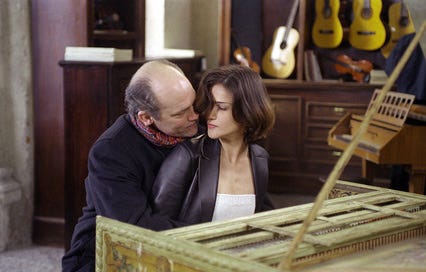


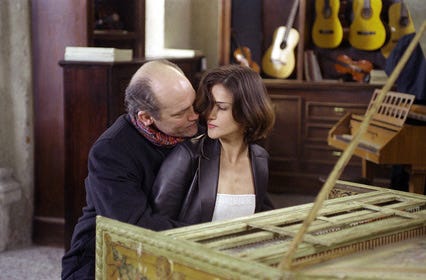
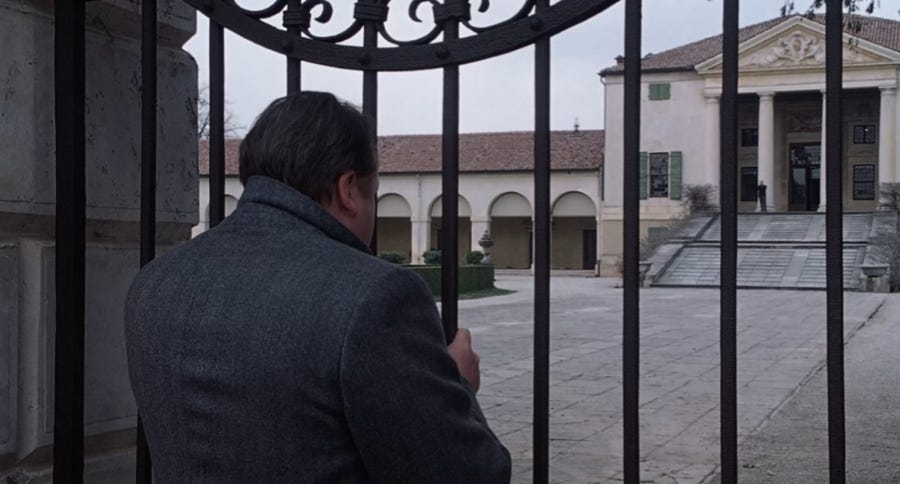
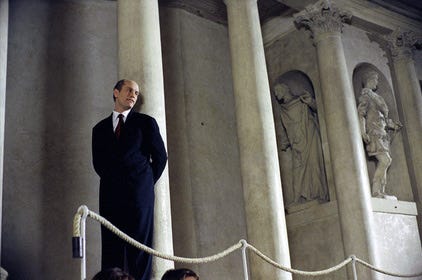
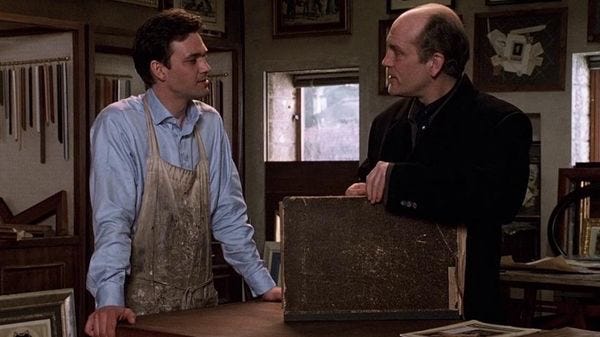
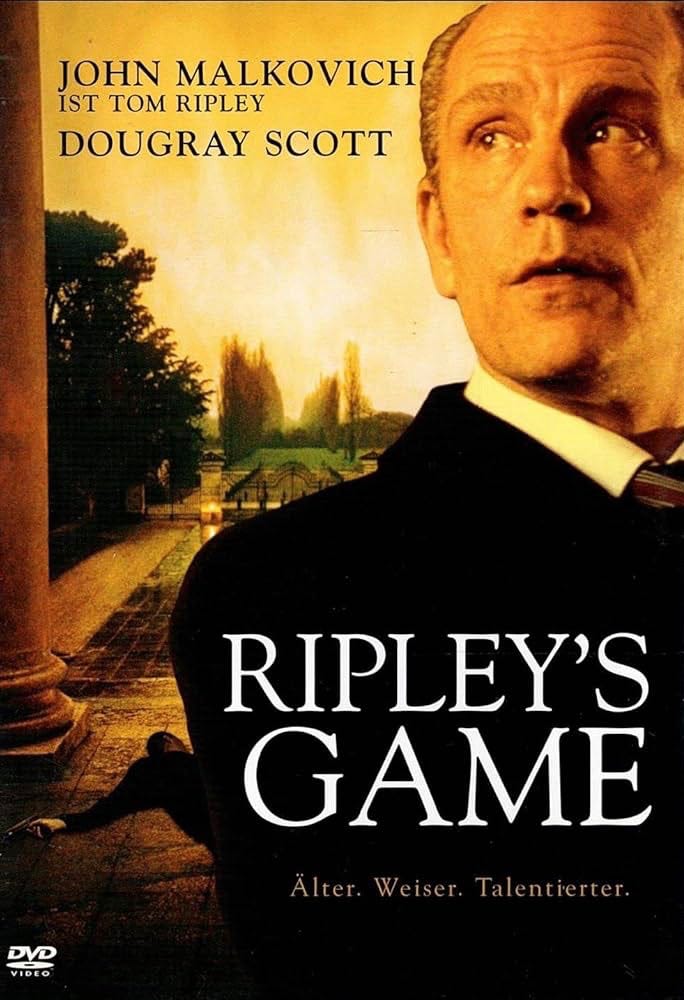
I kept this post for later, like dark chocolate after dinner, because I knew I would savor every bite.
This is heaven. Never seen it as felt idea of John M as Ripley was absurd, but you've convinced me. YES Ripley cookbook.